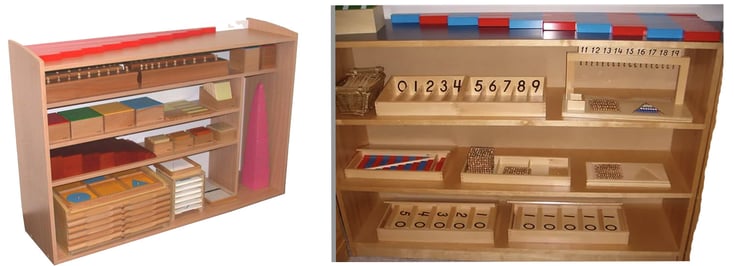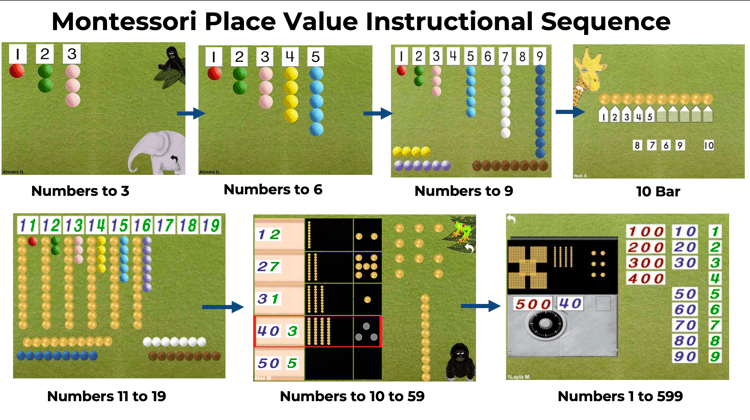Montessori Math: 115 Years Old & Getting Better with Time
In 1907 Dr. Maria Montessori opened a preschool in Rome called Casa di Bambini. It's 115 years later, and today there are over 20,000 Montessori schools worldwide. Graduates of Montessori preschools have gone on to become leaders in technology, science, business, music, sports, and the arts. They include: Jeff Bezos, Bill Gates, Larry Paige, Stephen Curry, Joshua Bell, George Clooney, Taylor Swift, Gabriel Garcia Marquez, Peter Drucker, Julia Child and many others.
This article introduces Dr. Montessori's mathematics program and instructional approach along with how Math Shelf's digital math program implements many of her ideas and methods to eliminate early math achievement gaps.
Montessori Math
Maria Montessori's mathematics program is based on the principle of "learning through action." Each math activity communicates clear goals, provides for self-assessment, uses hands-on materials, and progresses in difficulty. Montessori teachers assess children's math knowledge regularly to determine which math tasks to teach each student. Different math activities are taught to different students to ensure each child progresses at his/her pace and on his/her math level.

Montessori classrooms display math learning materials on child-size shelves (see images above). Activities on the math shelf are sequenced from easy to difficult with easier tasks placed on the top left shelf, and harder tasks appearing on the bottom right. After a teacher gives a lesson on how to use a certain math material, the child receiving the lesson can choose to engage with that activity, or other activities on the shelf that the teacher has introduced. As children progress, new more difficult activities are added to the math shelf, and easier activities are removed.
Math Shelf's Example of Teaching Place Value using the Montessori Method
Below is an example of how Math Shelf, an award-winning tablet math program, uses the Montessori colored beads, golden beads and numeral cards to teach preschoolers and Kindergarteners counting, numbers, and place value.
 Similar to Montessori, each Math Shelf activity communicates clear goals, provides digital materials for active engagement, and progresses in difficulty. What's interesting about Montessori's approach to teaching place value is that after children have mastered their numbers to 9, they easily learn numbers to 20, then 99, and finally 999. How?
Similar to Montessori, each Math Shelf activity communicates clear goals, provides digital materials for active engagement, and progresses in difficulty. What's interesting about Montessori's approach to teaching place value is that after children have mastered their numbers to 9, they easily learn numbers to 20, then 99, and finally 999. How?
Look at the Numbers to 9 image above. Students first sequence the numeral cards from 1 to 9, then match each bead to its corresponding numeral. Doing this teaches children numeral identification, number order, counting, and number size/magnitude.
Now compare the Numbers to 9 activity to the Numbers 11 to 19 task. Both activities ask students to order numbers and use the color beads to represent each number. The only difference is that students use a 10-bar, and a 10 numeral card to designate the tens place. The pattern of ordering the numeral cards and beads 1 to 9 is the same. The same idea applies as children learn numbers to 99, and then 999.
Independence, Autonomy & Control
Because Montessori's math approach matches learning materials to each child’s skill level, and provides for active engagement and choice, the approach engenders feelings of independence, autonomy and control. This leads to many little children learning and understanding big numbers. Don't be surprised if your Montessori preschooler is reading building addresses on the way to or from school.


